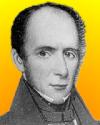
On 14 Dec 1795, John Bloomfield Jervis was born, American civil engineer who became the nation's leading consulting engineer of his time. In the period (1830-60) before the Civil War, he worked on several significant canal projects, railroads and water-supply systems. His obituary in the Proceedings of the American Society of Civil Engineers (1885) details the many projects in which he had been involved. An interesting man with an impressive list of achievements.

On 14 Dec 1546, Tycho Brahe was born, the greatest naked-eye astronomer, whose meticulous data was invaluable to Kepler who formulated fundmental laws of planetary motion. Today's book pick is: Tycho & Kepler, by Kitty Ferguson, who profiles Brahe and Kepler, placing them among the political intrigues of their times and the conflict between religion and science. Together, they made an enormous contribution to astronomy and understanding of the cosmos in one of the strangest stories in the history of science. Kepler was a poor, devoutly religious teacher with a genius for mathematics. Brahe was an arrogant, extravagant aristocrat who possessed the finest astronomical instruments and observations of the time, before the telescope. Both espoused theories that seem off-the-wall to modern minds, but their fateful meeting in Prague in 1600 was to change the future of science.
It is available from Amazon, typically about New from $86.86. Used from $7.04. (As of earlier time of writing - subject to change.)
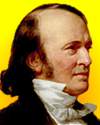 | The world is the geologist’s great puzzle-box; he stands before it like the child to whom the separate pieces of his puzzle remain a mystery till he detects their relation and sees where they fit, and then his fragments grow at once into a connected picture beneath his hand. |
 | I cannot afford to waste my time making money. A reply to an offer of a lecture tour. |
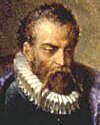 | Those who study the stars have God for a teacher. |
 | No engineer can go upon a new work and not find something peculiar, that will demand his careful reflection, and the deliberate consideration of any advice that he may receive; and nothing so fully reveals his incapacity as a pretentious assumption of knowledge, claiming to understand everything. |
| Before you look at today's web page, see if you can answer some of these questions about the events that happened on this day. Some of the names are very familiar. Others will likely stump you. Tickle your curiosity with these questions, then check your answers on today's web page. | |
| Births | |
 | Tycho Brahe, born 14 Dec 1546, developed astronomical instruments and made copious measurements fixing the positions of stars, thus paving the way for future discoveries. In 1577, he moved to his own observatory on Hven Island (financed by King Frederick II). In 1599 he moved to Prague, with Kepler as his assistant. What was Tycho Brahe's nationality? |
 | John B. Jervis was an American civil engineer who made outstanding contributions in construction of canals, railroads, and water-supply systems for the expanding United States. Jervis designed the first locomotive to run in America (which was built to his plans in England). What was the name of the first railroad locomotive to run in America? |
| Deaths | |
 | Louis Agassiz (1807-1873) was a Swiss-born U.S. whose teachings made revolutionary contributions to the study of natural science. As a naturalist, he made landmark work on extinct fishes. He is also known as a geologist with landmark work in that field. What was the field of his landmark work in geology? |
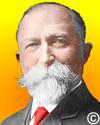 | An American physician and health-food pioneer whose development of dry breakfast cereals was largely responsible for the creation of the flaked-cereal industry. In 1876, at age 24, he became the staff physician at the Battle Creek Sanitarium, a position he would hold for 62 years. There, while developing his view of a healthy diet, he invented the toasted cereal flakes. It was his brother, who sweetened the flakes with malt, and began commercial production. What is the family name of these brothers? |
| Events | |
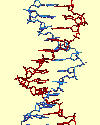 | On 14 Dec of a certain year, the first synthesis of biologically active DNA in a test tube was announced at a press conference by Arthur Kornberg. He and his colleagues had replicated the relatively simple DNA chain of the Phi X174 virus, which infects bacteria (a bacteriophage). It has a single strand of DNA only about 5500 nucleotide building blocks long, and with about 11 genes. In which decade was this DNA synthesized? |
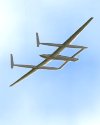 | On 14 Dec 1986, an experimental aircraft piloted by Dick Rutan and Jeana Yeager, took off from Edwards Air Force Base in California on the first non-stop, non-refueled flight around the world. The aircraft's design and light-weight structural materials allowed it to carry an unprecedented amount of fuel. During its 25,000 mile flight, the aircraft flew at an average speed of 115.8 mph. What was the name of this aircraft? |
Fast answers for the previous newsletter for December 13: certain Döbereiner triads of elements were arranged in order of increasing atomic mass, the mass of the central member was approximately the average of the other two, and intermediate in chemical properties between the other two elements. • magnesium • Thomas Watson • decade containing the year 1962 • Betelgeuse.
 If you enjoy this newsletter, the website, or wish to offer encouragement or ideas, please send feedback by using your mail reader Reply button.
If you enjoy this newsletter, the website, or wish to offer encouragement or ideas, please send feedback by using your mail reader Reply button. Your click on a Facebook, StumbleUpon, or other social button on the site webpages is also a welcome sign of appreciation. Thank you for using them.
© This newsletter is copyright 2019 by todayinsci.com. Please respect the Webmaster's wishes and do not put copies online of the Newsletter — or any Today in Science History webpage. (If you already have done so, please remove them. Thank you.) Offline use in education is encouraged such as a printout on a bulletin board, or projected for classroom viewing. Online, descriptive links to our pages are welcomed, as these will provide a reader with the most recent revisions, additions and/or corrections of a webpage. For any other copyright questions, please contact the Webmaster by using your mail reader Reply button.
--
If you do not want to receive any more newsletters, Unsubscribe
To update your preferences and to unsubscribe visit this link
Executive Real Estate Business Class
-
"It was like a man with wings. It wasn't like anything you'd see on TV or in a monster movie." ...
About the publisher
Search This Blog
Blog Archive
-
▼
2020
(1542)
-
▼
December
(121)
- On This Day for December 31 - Ottawa made capital ...
- Newsletter for Thursday 31 December.
- December 31: The Battle of Quebec, a Rainy Day in ...
- All That's Interesting's 10 Most Popular Stories O...
- On This Day for December 30 - Union of Soviet Soci...
- Newsletter for Wednesday 30 December.
- December 30: Creation of the USSR, the All India M...
- Know Better in 2021
- On This Day for December 29 - U.S. annexation of T...
- Newsletter for Tuesday 29 December.
- December 29: On This Day in History
- The Best of HISTORY This Week
- The 10 Best History Uncovered Articles Of 2020
- On This Day for December 28 - Westminster Abbey op...
- Newsletter for Monday 28 December.
- December 28: Galileo Observes Neptune, Harriet Tub...
- The death of Thomas Becket | The history of New Year
- On This Day for December 27 - Dutch transfer of In...
- Newsletter for Sunday 27 December.
- December 27: On This Day in History
- On This Day for December 26 - Indian Ocean tsunami...
- Newsletter for Saturday 26 December.
- December 26: 1st Spanish Settlement in the New Wor...
- The Anti-Santa Who Takes Naughty Kids To Hell, The...
- On This Day for December 25 - Christmas celebrated...
- Newsletter for Friday 25 December.
- December 25: Andrew Johnson's Christmas Pardon, Ce...
- On This Day for December 24 - Treaty of Ghent, Joh...
- Newsletter for Thursday 24 December.
- December 24: The Treaty of Ghent, Author Stephenie...
- Demystified Video: Why Is Christmas in December?
- On This Day for December 23 - Aleksander Kwaśniews...
- December 23: Van Gogh's Madness, the Partition of ...
- On This Day for December 22 - Alfred Dreyfus sente...
- Newsletter for Tuesday 22 December.
- December 22: An Impenetrable Fortress Falls, the 1...
- On This Day for December 21 - Radium discovered by...
- December 21: The Soviet Union Ends, Life in the Tr...
- A history of Christmas – from Oliver Cromwell to V...
- On This Day for December 20 - Macau made an admini...
- Newsletter for Sunday 20 December.
- December 20: US Buys Louisiana, the Viet Cong and ...
- On This Day for December 19 - Articles of impeachm...
- Newsletter for Saturday 19 December.
- December 19: On This Day in History
- The Soviet Executioner Who Killed 7,000 Poles One ...
- On This Day for December 18 - Slavery abolished in...
- Newsletter for Friday 18 December.
- December 18: The Yuan Dynasty Begins, Nuclear Powe...
- The perfect gifts for the curious kids in your lives!
- On This Day for December 17 - Flight of the Wright...
- Newsletter for Thursday 17 December.
- December 17: Tamerlane Sacks Delhi, the Wright Bro...
- Demystified: Do We Really Use Only 10 Percent of O...
- On This Day for December 16 - Boston Tea Party, Ja...
- Newsletter for Wednesday 16 December.
- December 16: A Boston Tea Party, the Battle of the...
- Haunting Kennedy Assassination Photos That Most Pe...
- On This Day for December 15 - Premiere of Gone wit...
- Newsletter for Tuesday 15 December.
- December 15: Vandals, Mongols and the US Bill of R...
- On This Day for December 14 - Roald Amundsen's arr...
- Newsletter for Monday 14 December.
- December 14: Amundsen and Scott's Epic Race to the...
- On This Day for December 13 - New Zealand sighted,...
- Newsletter for Sunday 13 December.
- On This Day for December 12 - U.S. Supreme Court d...
- December 12: A Generous Manhattan Gift, Bush v. Go...
- How eels powered the medieval economy | The histor...
- 55 Of History's Creepiest Pictures And Their Distu...
- On This Day for December 11 - Abdication of King E...
- Newsletter for Friday 11 December.
- December 11: The Mayflower Pilgrims, an Abdication...
- UPDATED: Britannica Year in Review: Story of the Year
- Britannica Year in Review: Story of the Year
- On This Day for December 10 - Encyclopædia Britann...
- Newsletter for Thursday 10 December.
- December 10: Spanish-American War, Edward VIII and...
- Laurence Fishburne Hosts a New HISTORY Digital Series
- Demystified: What's the Difference Between Whiskey...
- On This Day for December 9 - Lech Wałęsa elected p...
- Newsletter for Wednesday 9 December.
- December 9: Belisarius Enters Rome, Lech Wałęsa El...
- What will you discover this Thursday?
- On This Day for December 8 - John Lennon fatally s...
- Newsletter for Tuesday 8 December.
- December 8: Lincoln's Amnesty Proclamation, the US...
- On This Day for December 7 - Pearl Harbor attack, ...
- Newsletter for Monday 7 December.
- December 7: Birth of Plastics, Infamy in Pearl Har...
- History books of the year | Historical board games...
- On This Day for December 6 - Irish Free State esta...
- Newsletter for Sunday 6 December.
- December 6: Mongols Destroy Kiev, Slavery Abolishe...
- On This Day for December 5 - Witchcraft condemned ...
- Newsletter for Saturday 5 December.
- December 5: Gold Rush in California, End of Prohib...
- HNN Newsletter: You are now unsubscribed
- 10 Medieval Execution Methods That Are The Definit...
- On This Day for December 4 - Ivan the Terrible pro...
-
▼
December
(121)
-
Blogroll
-
About
HistoryFact










0 comments:
Post a Comment